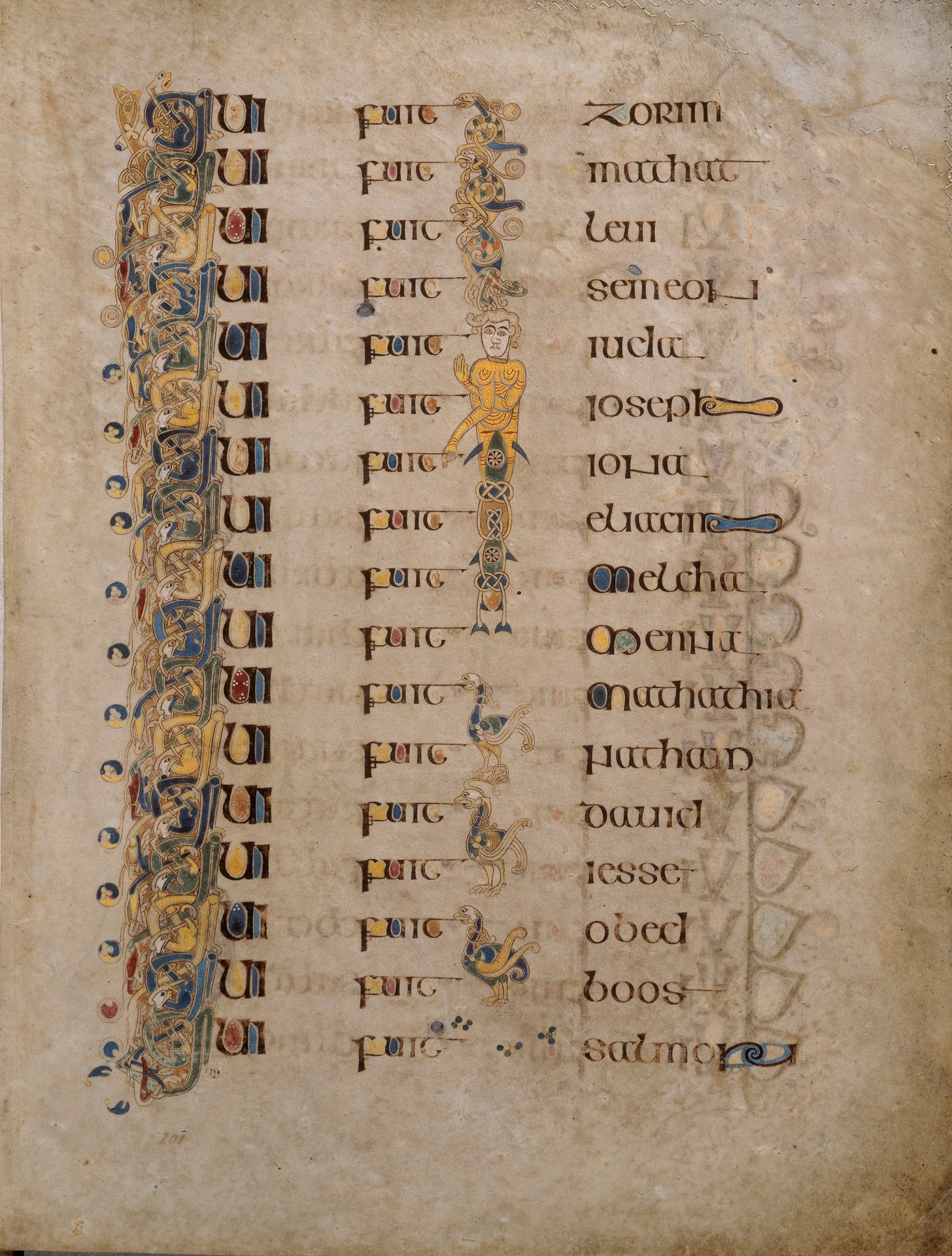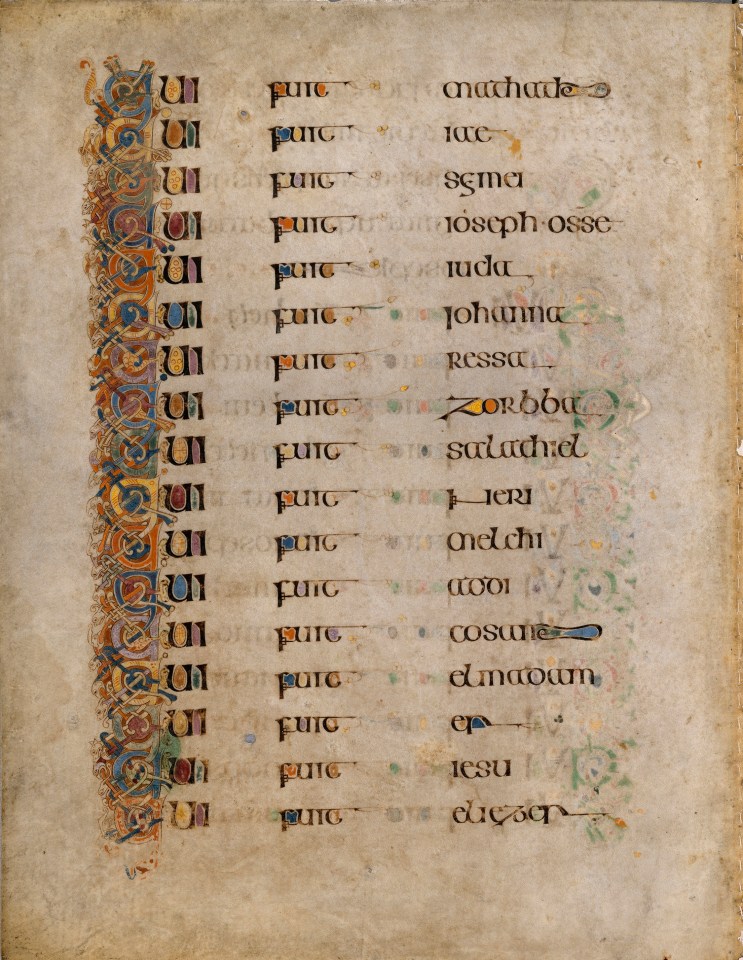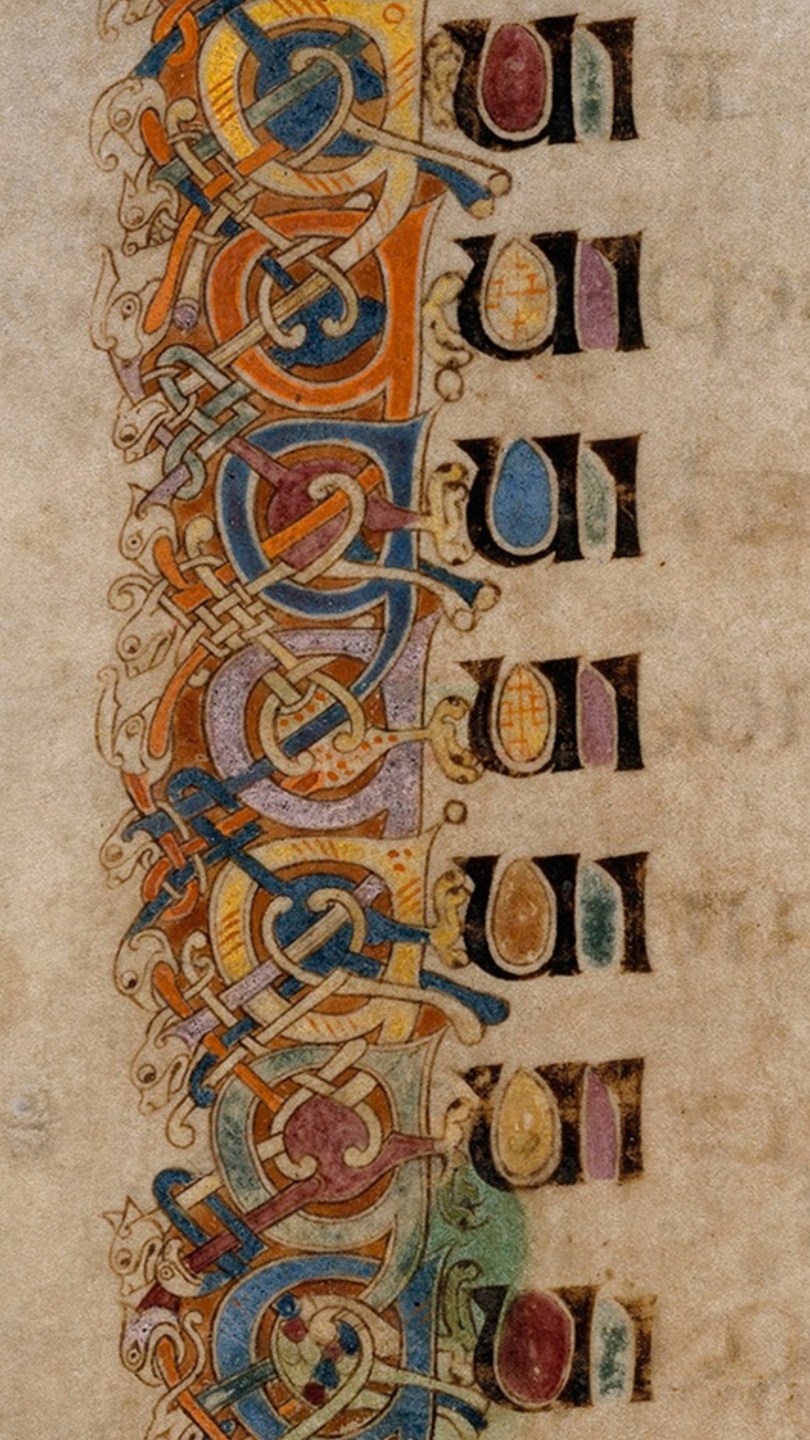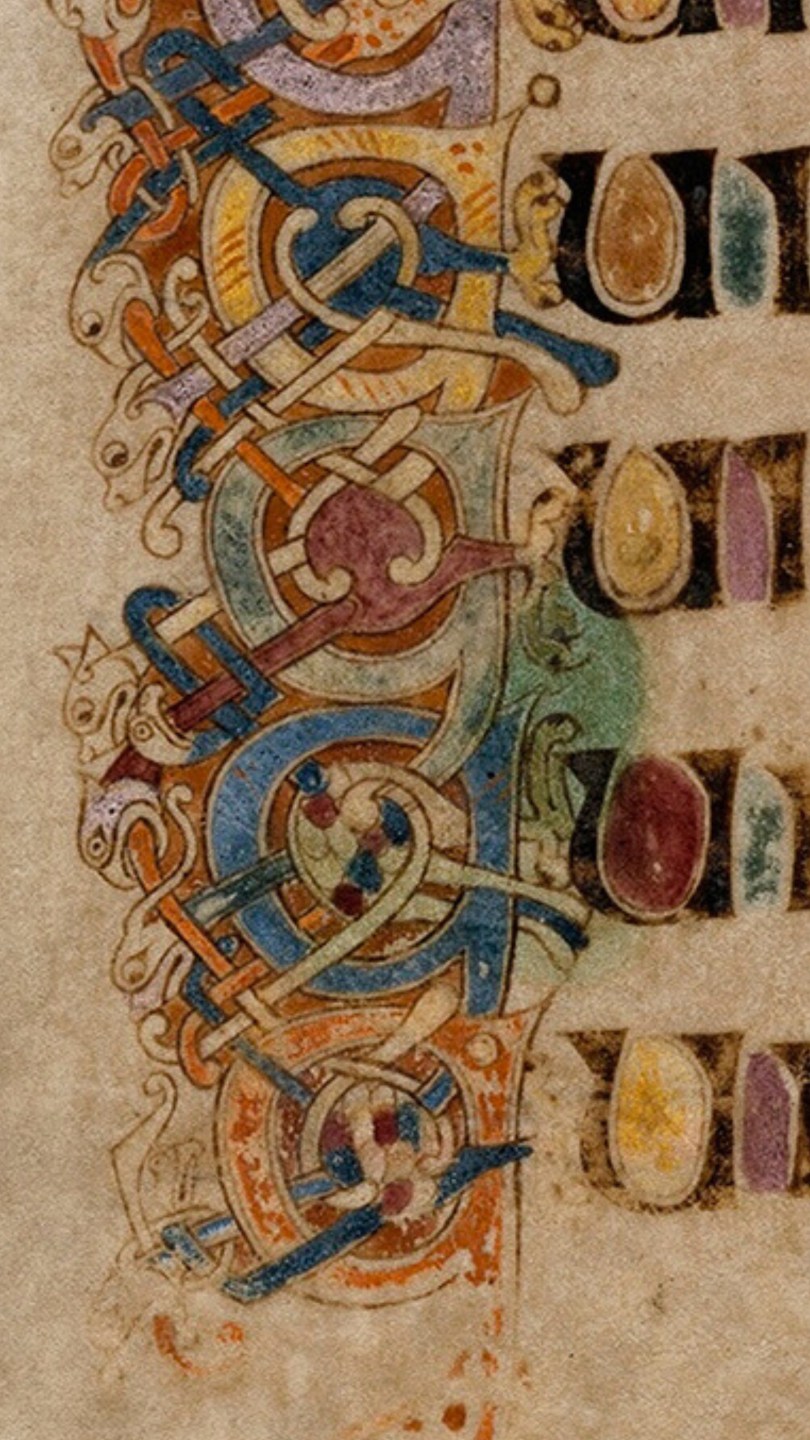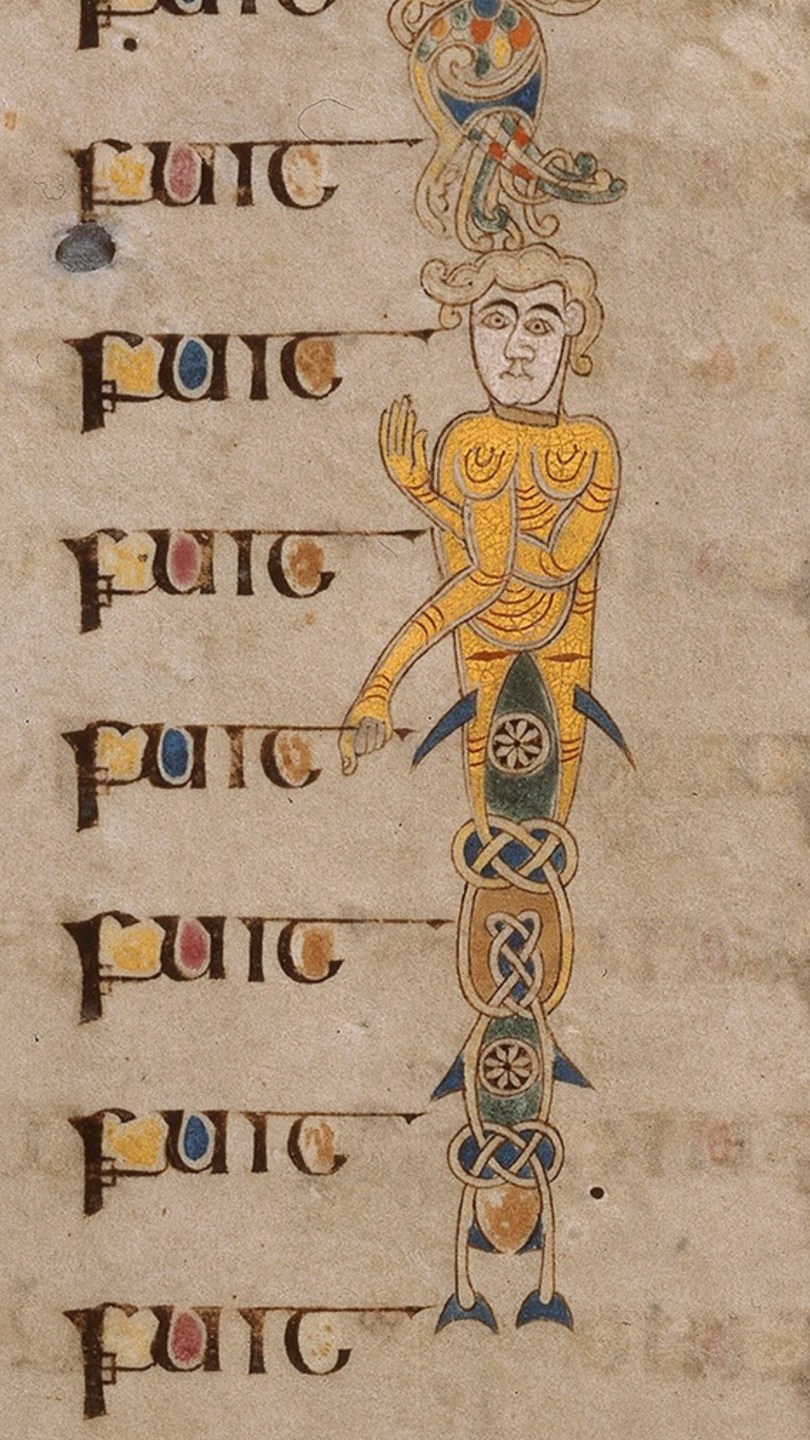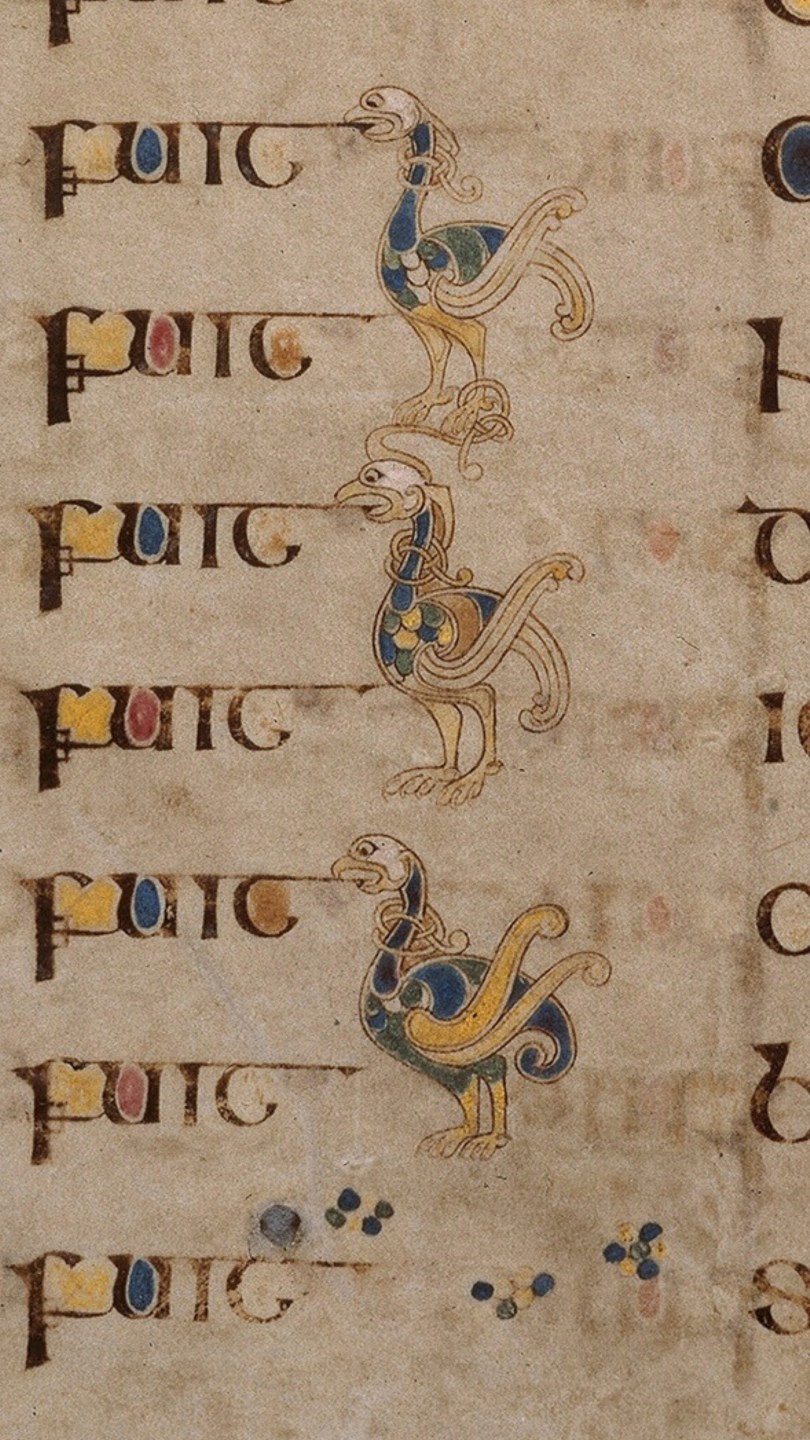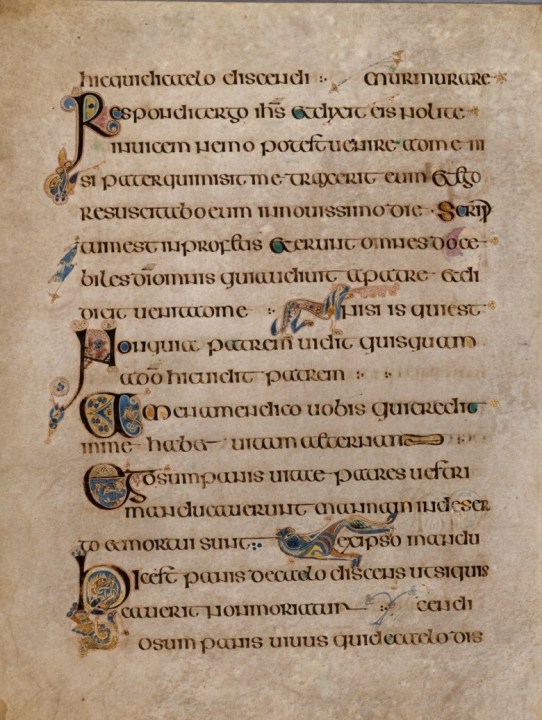
The date and place of origin of the Book of Kells have long been subjects of controversy. A monastery founded around 561 by the Irish saint Colum Cille on Iona, an island off Mull in western Scotland, became the principal house of a large monastic confederation. In 806, following a Viking raid on the island which left 68 of the community dead, the Columban monks took refuge in a new monastery at Kells, County Meath, and for many years the two monasteries were governed as a single community. It must have been close to the year 800 that the Book of Kells was written, although there is no way of knowing if the book was produced wholly at Iona or at Kells, or partially at each location. In the Middle Ages the manuscript was revered at Kells as the great gospel book of Colum Cille.
The possible doves on folio 201r of the Book of Kells may be a wordplay on Colm Cille’s name in religion ‘Columba’, which is Latin for dove. The link to ‘Columba’ is alluded to again in the figure, half man and half fish, in the central column, who holds the final letter of fuit in the line Qui fuit Iona (‘son of Jona’, literally ‘who was of Jona’; Luke 3.30), possibly drawing attention to the word Iona (the Hebrew for dove) and so perhaps to the name of Colum Cille.
